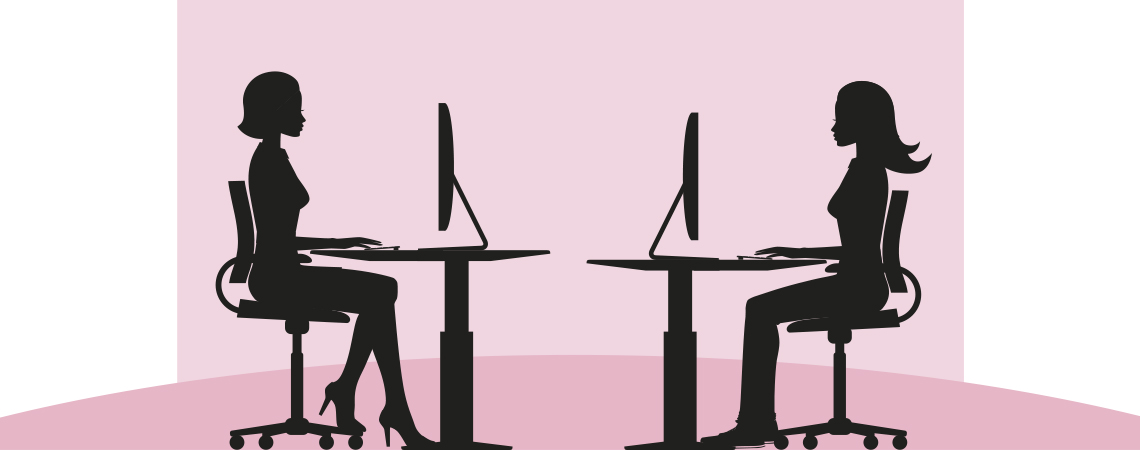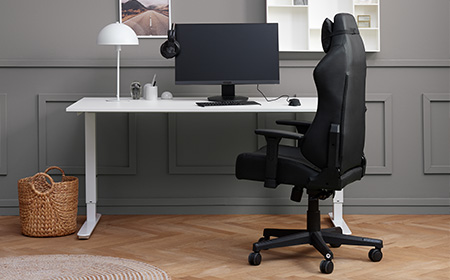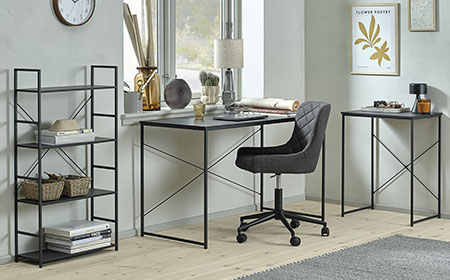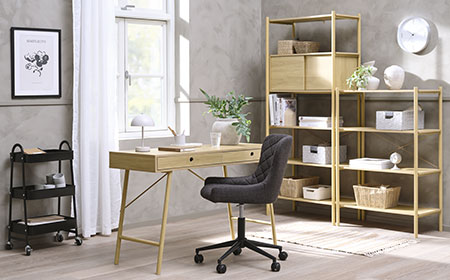When you're sitting at a desk all day, your posture can often deteriorate as you may lean and slump in order to feel more comfy. But an incorrect sitting posture can effect you in the long term. Read on for correct sitting posture tips and advice to avoid any future neck and back pain.
6 tips for a correct sitting posture
It can be difficult to find the correct sitting position and there are several reasons for this. In fact, there is no single correct sitting posture, but there are certain precautions you should take when sitting in a desk posture for a long period of time:
- Your feet should flat on the floor
- There should be room for a clenched fist between the backs of your knees and the front edge of the chair
- Legs and arms should be at a 90º angle
- Your desk should be two-to-three centimetres higher than your elbow, when you have your side to the table and the arm at a 90º angle. Make sure you relax your shoulders when measuring
- Avoid using the armrest if your chair has one, unless you are sitting at a 90º angle. Otherwise, you risk lounging on the armrest
- Make sure you change position from time to time. Take a short walk or do some stretching exercises, if you are going to be sitting on your chair for a long period of time
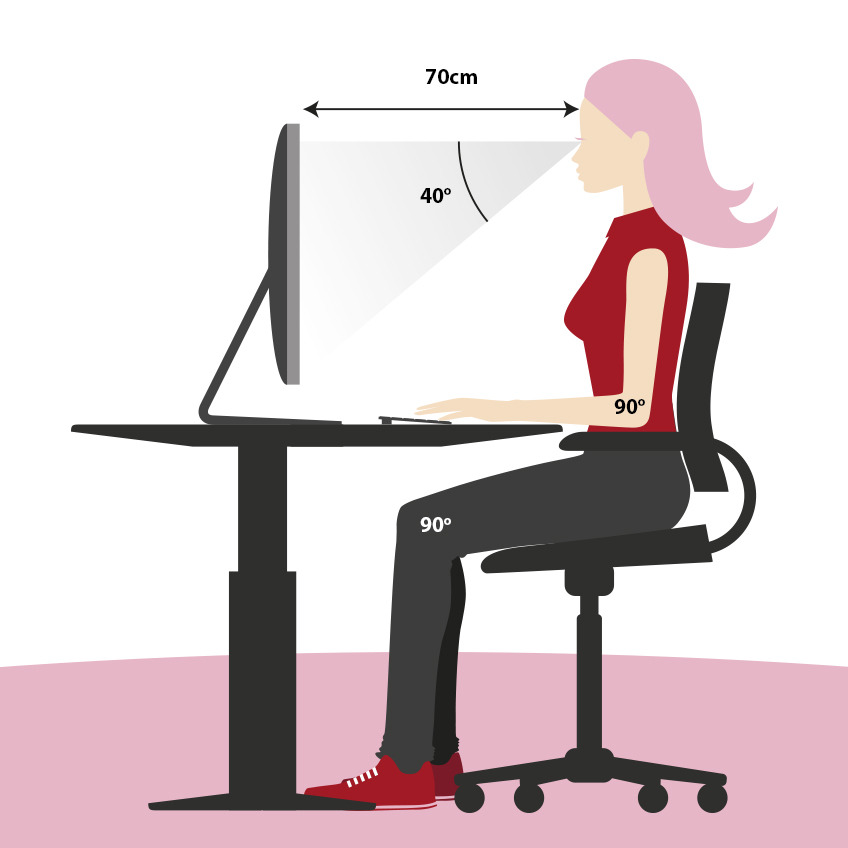
How to set up your office chair correctly
A correct sitting position depends on choosing an office chair that meets specific requirements. The chair should have at least five casters, so you can sit in a stable position and move easily across the floor. To make it even easier to move around, a chair mat is highly recommended. It also prevents any scratches on the floor.
In order to have the correct sitting position, you should be able to adjust the seat height and depth of your chair. You should also be able to adjust the backrest so that the chair accommodates your height and the curve of your back. The backrest should support your lower back and should not be any higher than your shoulder blades. The lower back support should be at belt height so your back remains straight. But you should always make sure that you do not stoop. 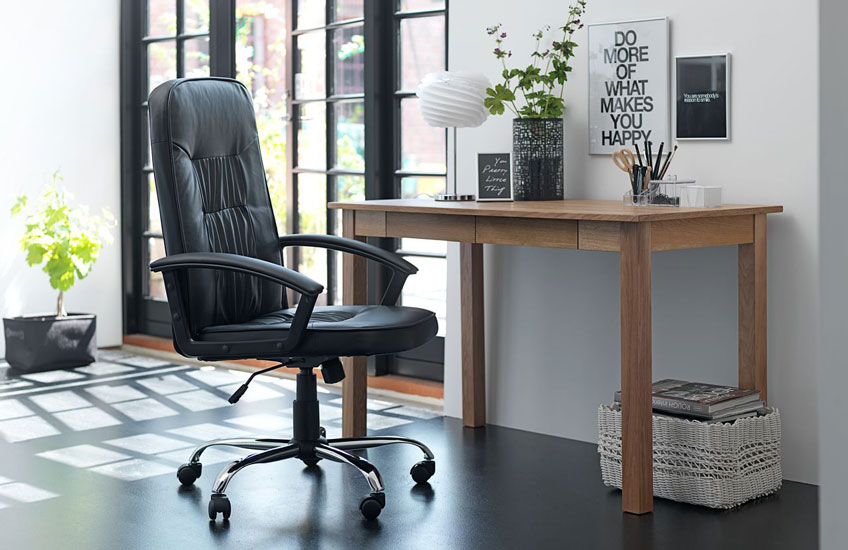
Make sure you change sitting position from time to time
A correct sitting posture is important, but it is not enough. Make sure you change desk posture from time to time to keep your body active. By keeping your body active you can avoid many of the aches and pains that can result from sitting in a chair for a long period of time.
One good way of creating variation is to get up when you are speaking on the phone. Whenever possible, hold meetings on foot, or simply do some stretching exercises at regular intervals. If you have a height-adjustable desk, it is not a bad idea to work standing now and again. Make this a routine so you don't forget.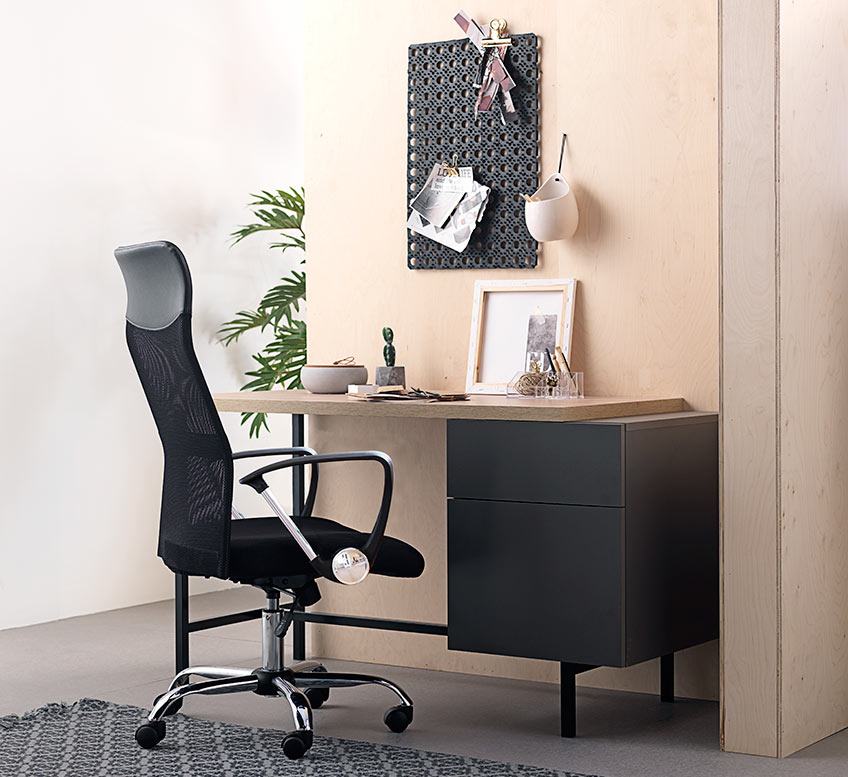
Other tips for a comfortable sitting position
There are other factors which may have an impact on getting or having pain. If seating variation does not help you could try adjusting your screen. In general, you should look down into your screen. If you have a screen which you are looking up at this can lead to neck pain. The distance to your screen should be about the length of an arm ca. 70cm, or a bit longer in the case of larger screens.
